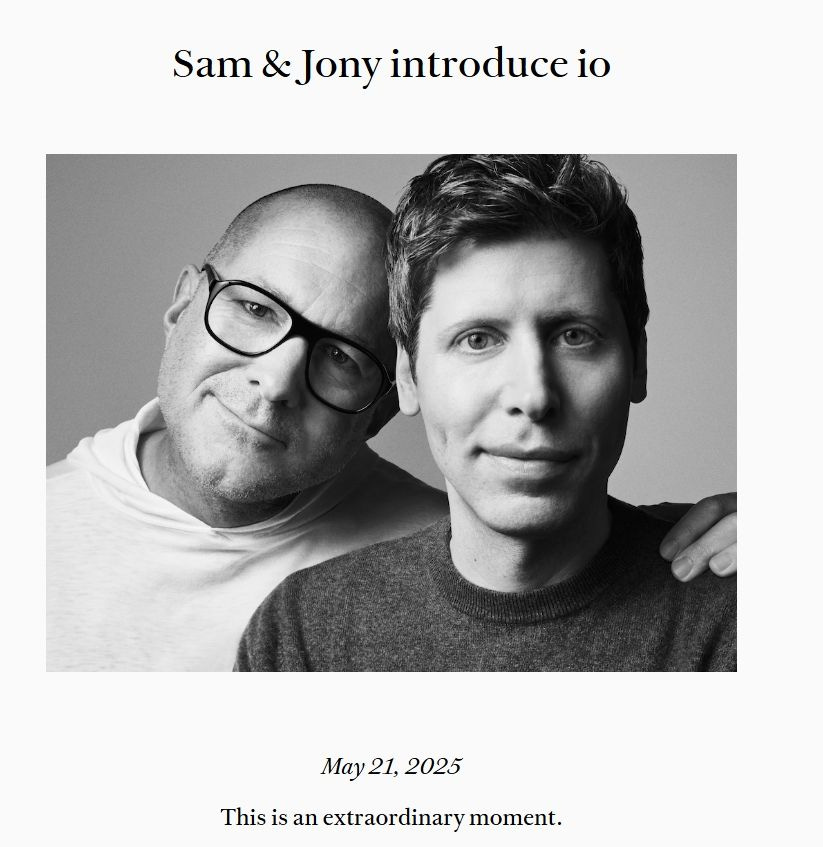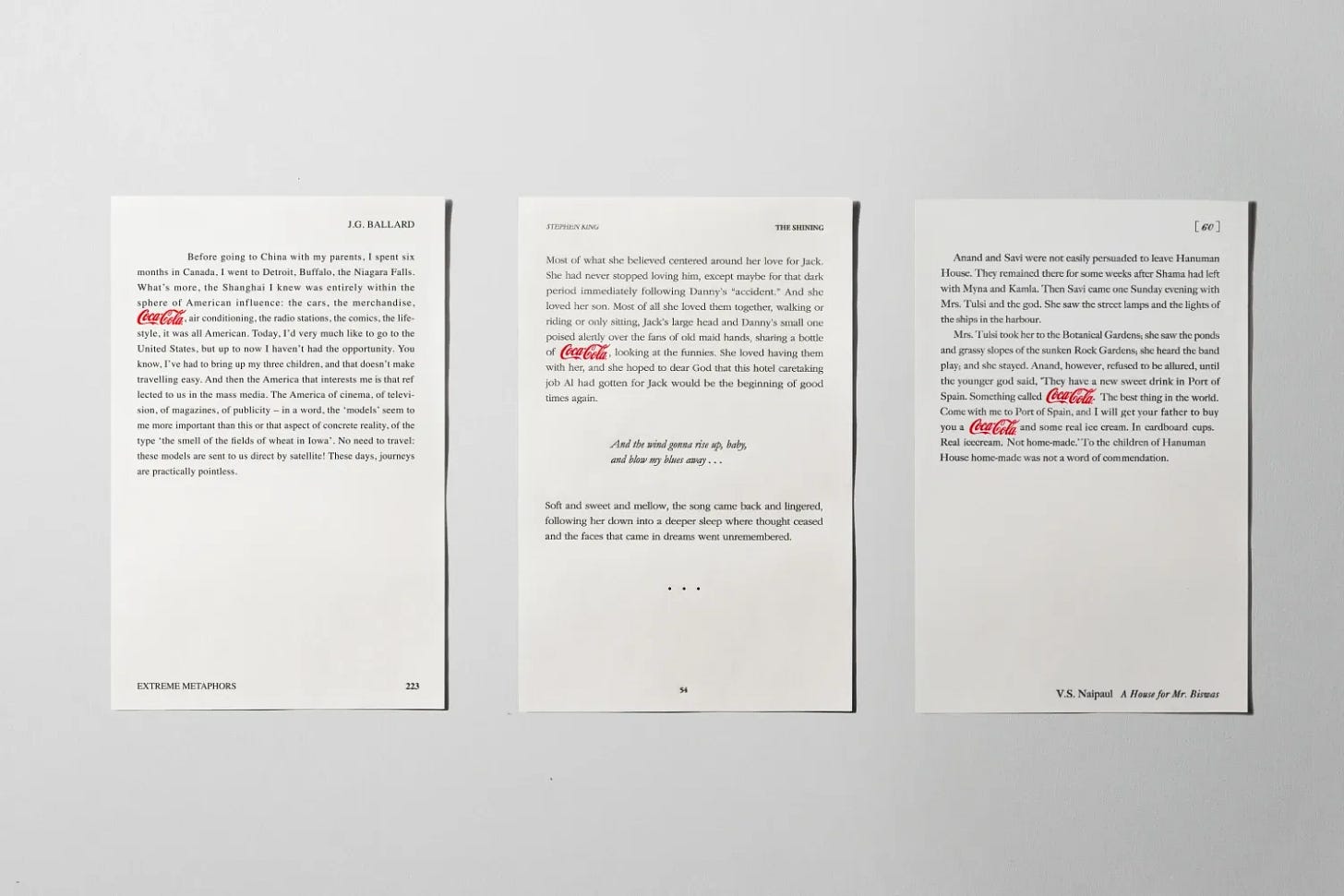Welcome back to my monthly roundup of news about words, brands, and the language of commerce from Substack and beyond! If you’re new around here, you can catch up with the April linkstack, which will link you to previous installments.
Some housekeeping: Tap on the headline to see the full newsletter. If you like what you see, let me know by tapping the little heart icon. If you’re motivated, let me know in the comments what you’d like to see in next month’s linkstack. Maybe something you yourself have written or created! You can also email me at nancyf@wordworking.com.
Substack discoveries
. I remember hearing his Romanian-accented commentaries on NPR and being intrigued that he’d founded a journal called Exquisite Corpse, which was named for a surrealist game. Now he has a Substack newsletter, Keep the Sabbath with Me, which he calls “meditations in an emergency.” His new book, a poetry collection, is How to Live Under Fascism., a book critic, knows whereof she speaks with her A-to-Z of book-review clichés. The translation of “luminous” or “lyrical”? “Not much happens.” on what typewriters teach us about writing: “If I sit in front of a typewriter, I am reminded that it is not the tool’s job to write for me. I have to find a word, develop it into a sentence, to form it into a paragraph, to string those together to tell a story.”, a sociolinguist at the University of Pittsburgh, analyzes the distinctions between bro- and man- neologisms (“Broligarchies and manterruptions”). . The longtime Boston Globe language columnist reviews The Journal of Wordplay, which sounds like a real mind-blower: “Mynorca is acronym spelled backward, but that’s beside the point, the point being that the letters of the first word of a basic automynorcagram are the initials of all the words in it. ‘Consider: This hits in sequence.’” Concurrent, which “explores the parallel and divergent tech/cultural currents flowing through China and the world,” examined those weird Bay Area billboards that “have become a coded language for a tech world in flux.” I wrote about one of those billboards, from an AI company called Artisan (!), last year (Medium; gift link).
Some advertisers are punching back:
went to Japan in January and has been writing ever since about what she saw. Her latest installment, Reading the Signs, Japan-Style, is very much in my wheelhouse. Here’s Rusty on one of the weirder signs she photographed: “I thought this was a warning about shoplifting (I mean, right?). But it turns out it’s about sāchi kōi (“searching behavior”), which means shaking, squeezing, or poking blind boxes to figure out what toy you’ll get. For good reason that’s not cool.”-pilled and -maxxing
Linguist Mark Liberman wrote for Language Log on two of the suffixes du jour. -pilled and -maxxing: “The etymology of maxxing is clear, though the double x is an innovation, and the cultural history of the idiom needs exploring — it hasn't made it into Wiktionary yet, much less the OED.”
I wrote about -pilled a couple of years ago:
So many ways to be -pilled
Even a person like me who has never made it all the way through The Matrix (1999) or its countless spin-offs can’t avoid the movie’s dominant trope: red pill, blue pill:
. . . and now that the cable channel MAX is once again HBO Max, Ali Sell wrote for Zinzin about “Maxed-out brand names.”
That Altman-Ive bromance
If you haven’t seen the nine-minute video announcing the Sam Altman x Jony Ive collaboration, check it out here. Then read the SF Standard’s beat-by-beat takedown:
0:35: The video’s first few seconds have the feel of a romantic (bromantic?) comedy’s opening sequence, with the “two friends” navigating thronged streets from separate starting points en route to a cafe meet-up. Unusually thronged, for that part of town, actually. Suspiciously thronged, even …

Fictional fiction
You’ve probably read about the AI-generated “summer reading list” that ran recently in the Chicago Sun-Times and the Philadelphia Inquirer — and which featured made-up titles and invented synopses. (Gift link to New York Times coverage.) But that wasn’t the only literary AI snafu in the last couple of months, as Fortune reports:
Coca-Cola’s recent AI-powered advert appears to have got its facts mixed up. In an April campaign called “Classic,” the company aimed to highlight examples where its brand name appears in classic literature. The ad uses Stephen King’s The Shining and V. S. Naipaul’s A House for Mr. Biswas as examples. However, it also includes a book called Extreme Metaphors by J. G. Ballard, which does not exist.

A slice of PIE
Here’s a real book by a real author that I’m really looking forward to reading:
And here’s Laura Miller’s review for Slate.
The banality of AI
“If AI is so exciting, why is AI branding and marketing so boring?” Good question! (Eli Altman for A Hundred Monkeys)

Hello, AEO
OK, one more AI-related item: Mike Pope delivers a batch of nouveau vocabulary, including answer engine optimization (it’s the new SEO, doncha know) and road diet.
Geely! wants! Zeekr!
New York Times business reporter Erin Griffith also writes a monthly Substack newsletter called Erin Griffith’s Tribute to the Heroes of Business™, “a weekly rundown of the antics, egos, absurdities and narrative violations happening in start-up land, from a business journalist who has covered the industry for a really long time.” I chortled over “Blorp bought Plook (right after Quirkle bought Plokus,” which includes an exciting tidbit: “This week really delivered, with the news that Geely has submitted a bid for Zeekr. I repeat, Geely! wants! Zeekr!” (A personal note: Erin interviewed me for that “unhinged” May 2020 Times story about “startups with fast-sounding names.” It was Early Pandemic, and we were all a little discombobulated.)
Baby talk
The U.S. Social Security Administration releases its baby-name data every year in early May, and baby-naming experts publish their takes shortly thereafter. For smart analysis and commentary on this topic, see:
Namerology, “5 things we learned from the new baby name popularity stats,” “Bandit, Methuselah, and 22 more intriguing new boys’ names,” and other posts published this month.
Nancy’s Baby Names (no relation!), “Popular and unique baby names in each state in 2024.”
- , “Why [name] popularity matters less than you think”: In three parts; start here.
Last: laugh!
A disillusioned urban planning glossary (Emilie K. Adin for McSweeney’s):
Traffic Calming – A strategy to convince cars that they are not the main character in their own biopic.







There must be a word for when a post contains so many intriguing-sounding links that you have to go over it multiple times to visit and enjoy everything. Brava!
The "67 cringe-worthy clichés of book reviewing" is hilarious.
Also, in "Namerology" "America’s #1 brand-new name is Lahiam, …[from] Colombian influencers Deiby Ruiz and Katy Cardona…" Sounds like another transliteration of "L'chaim", Hebrew for "To life."
And apparently for more than a decade, one of the top boy's name has been "Liam." A surprise for this geezer.